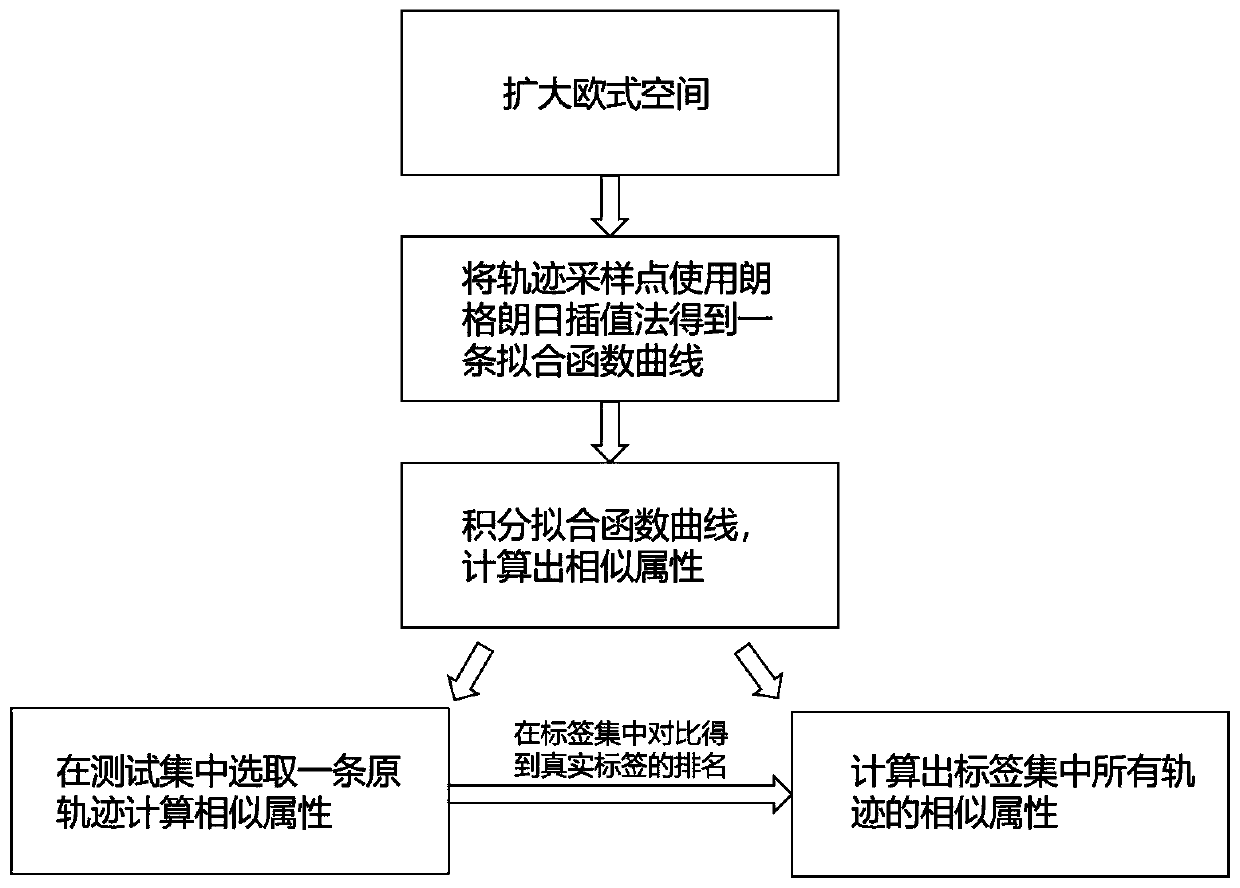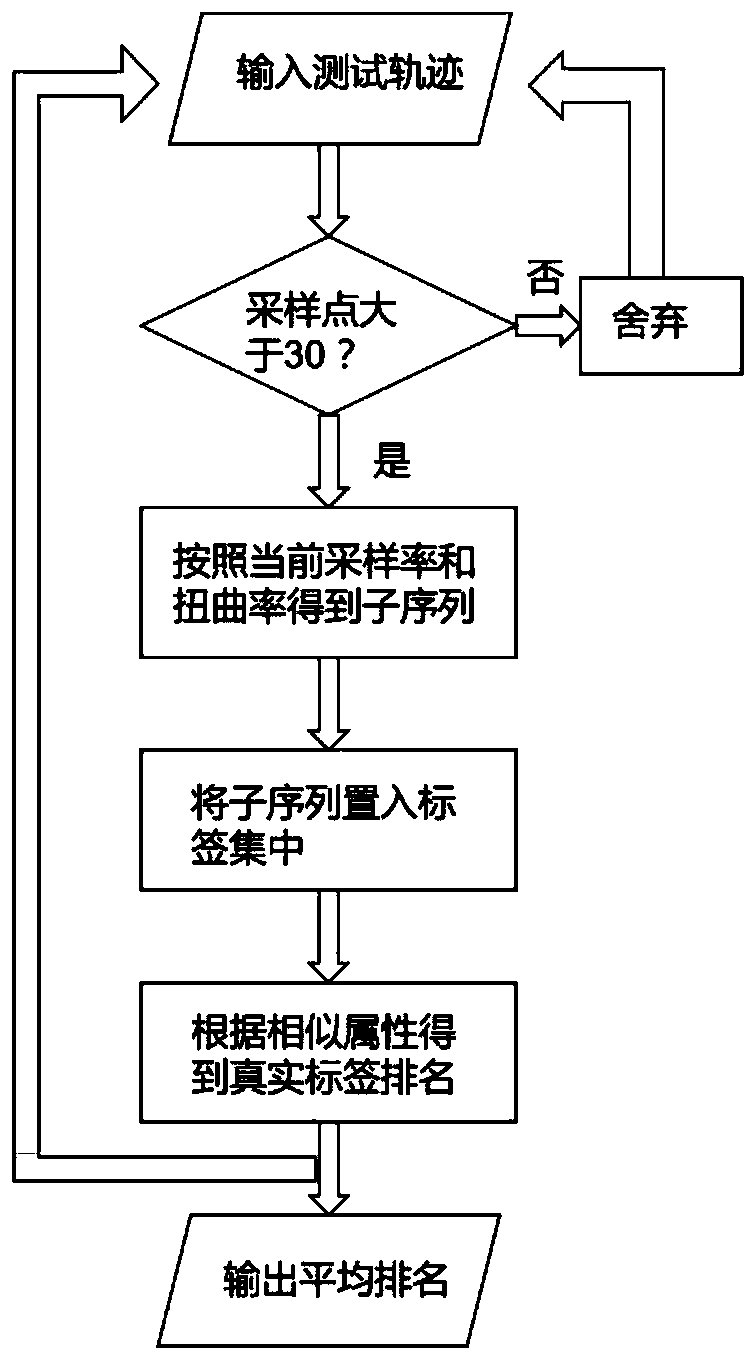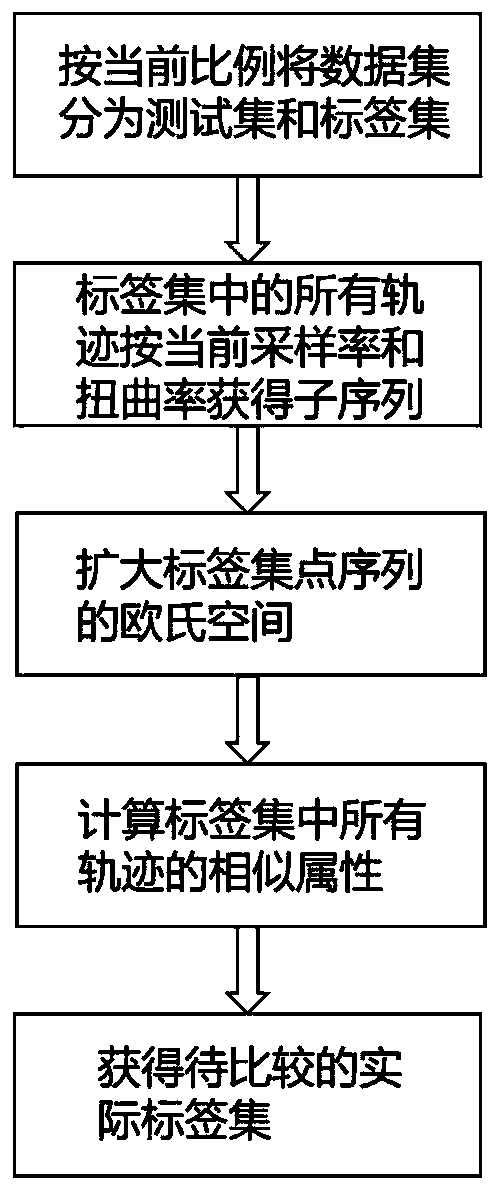Trajectory similarity calculation method based on interpolation and integration
A calculation method and similarity technology, applied in the field of trajectory similarity calculation based on interpolation and integration, can solve the problems of increased calculation cost, uneven sampling rate, high algorithm time complexity, etc., and achieve the effect of reducing time complexity
- Summary
- Abstract
- Description
- Claims
- Application Information
AI Technical Summary
Problems solved by technology
Method used
Image
Examples
Embodiment Construction
[0034] The present invention will be further described below in conjunction with the examples. The description of the following examples is provided only to aid the understanding of the present invention. It should be pointed out that for those skilled in the art, without departing from the principle of the present invention, some improvements and modifications can be made to the present invention, and these improvements and modifications also fall within the protection scope of the claims of the present invention.
[0035] One, overall thought of the present invention:
[0036] The similarity measurement model of the present invention is mainly based on an integrated point sequence data set collected by vehicle coordinates, which is divided into a test set and a label set, and a similarity attribute is calculated for each trajectory in the test set and the label set. Lagrangian interpolation method is used to fit polynomial curves to maximize the display of trajectory charac...
PUM
 Login to View More
Login to View More Abstract
Description
Claims
Application Information
 Login to View More
Login to View More - R&D
- Intellectual Property
- Life Sciences
- Materials
- Tech Scout
- Unparalleled Data Quality
- Higher Quality Content
- 60% Fewer Hallucinations
Browse by: Latest US Patents, China's latest patents, Technical Efficacy Thesaurus, Application Domain, Technology Topic, Popular Technical Reports.
© 2025 PatSnap. All rights reserved.Legal|Privacy policy|Modern Slavery Act Transparency Statement|Sitemap|About US| Contact US: help@patsnap.com



